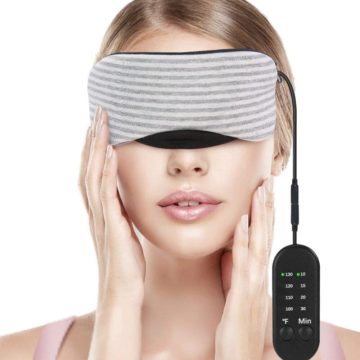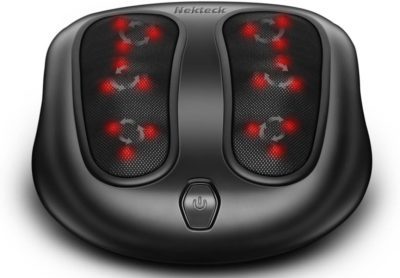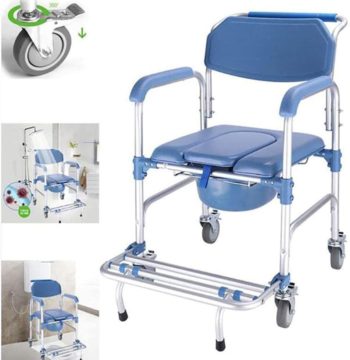Any normal reaction towards danger is anxiety. While under pressure, facing a challenging situation like a job interview or when you feel threatened by a particular thing or situation, the body will automatically give a fight or flight response. While at a moderate level, anxiety is not a cause for alarm; instead, it keeps you focused and acts as a motivation to look for solutions to solve the problem at hand. At times anxiety is overwhelming and can interfere with your daily life. It shows that you are likely to be facing an anxiety disorder. There are different types of anxiety disorders, but we will aim to understand the anxiety attack.

Photo by Andrea Piacquadio from Pexels
What is an Anxiety Attack?
It is also known as panic attacks. It is an episode characterized by intense fear or panic. The attacks always occur suddenly and have no warning signs. At times they are caused by an obvious trigger like being stuck in an elevator, while in other cases, the attacks are no attributable to any stimulus.
The attacks peak within 10 minutes and last within 30 minutes; this timeline is only exceeded in rare circumstances. In this short period, you might have experienced terror that is so severe you feel as if you are about to die or lose control. The symptoms are frightening, and you might think you have a heart attack. Often after one episode, you will worry about having another and more so in areas where you will not find help.
What are the symptoms of anxiety attacks?
- Heart palpitations and chest pains
- Feelings of lack of air and passing out
- A surge of overwhelming panic
- Loss of control
- Choking sensation or difficulties while breathing
- A sense of being detached or unreal
- Nausea and stomach upset
If you avoid certain situations because of the fear of having an attack, you must seek help. After 5-8sessions of therapy, many people are free from panic attacks
Types of anxiety disorders and their symptoms
There different types of anxiety disorders
- Generalized anxiety disorder (GAD)
Are you having constant worries and fears distracting you from day to day activities, or are always anticipating something terrible will happen? You are likely having GAD People with GAD are worrywarts and feel anxious almost all the time, and they can’t tell why. GAD can manifest in physical symptoms like insomnia, restlessness, and fatigue.
- Panic attacks and panic disorder
The attacks are characterized by repeated, unexpected panic attacks coupled with the fear of experiencing another episode. The fear of being somewhere you cannot find help or escape always accompany panic attacks.
- Obsessive-compulsive disorder (OCD)
It is characterized by unwanted thoughts that are difficult to control. The recurring thoughts are troubling. You may also suffer from compulsions such as washing hands often because of the beliefs that you touched an unclean surface and might get sick.
- Phobias and irrational fears
Phobias are exaggerated fear of a specific object or situations that, in a real sense, present little to no danger. The Phobias of animals and fear of heights are common phobias. Voidance of these phobias strengthens the phobias.
- Social anxiety disorder
The debilitating fear of being negatively viewed by others or being humiliated in public is a symptom of having a social anxiety disorder. At times the condition is always considered as extreme shyness. In severe cases, a person with social phobia avoids social situations.
- Post-traumatic stress disorder (PTSD)
It is extreme anxiety that can occur in the aftermath of a traumatic, life-threatening event. At times it can be thought to be a panic attack. The typical symptoms of PTSD include nightmares or flashbacks about the incidence, hypervigilance, social withdrawal, and avoidance of situations that bring memories of the event.
- Separation anxiety
It is a normal development stage, although if anxieties intensify or are severe to interfere with the way of life of a child, then it is separation anxiety. Such children are agitated at the thoughts of being away from their parents and avoid playing with friends.
- Self-help for anxiety disorder
It doesn’t mean that everyone who worries a lot has an anxiety disorder. Some people will feel anxious because of a demanding schedule, the pressure to accomplish something, or too much caffeine intake. People with unhealthy and stressful lifestyles are more likely to feel anxious with or without having an anxiety disorder.
Tips to lower anxiety
- Connecting with others- Being alone acts as a trigger for anxiety. Talking with others about your worries enables you to ease the overwhelming emotions. Make it a routine to connect with friends, partake in self-help groups, or share your worries with a loved one. If you have no friends, it’s not too late to build new friendships and support networks.
- Managing stress- If you have a high level of stress, management can help. Do quick checks to what is overwhelming. You have to drop others and delegate some so that you can work with something manageable.
- Apply relaxation techniques– mindfulness meditation, muscle relaxation, and taking deep breaths can reduce anxiety. Feelings of being relaxed increases emotional well-being and thus reducing stress.
- Do regular exercise– exercise is a natural stress and anxiety reliever. Aim at 30 minutes of aerobics daily, if possible, walking, running, swimming, and dancing can also lessen anxiety.
- Enough sleep– insomnia can increase the anxious thoughts; quality sleep can help reduce worry time.
- Stop to chronic worrying– worrying is always a mental habit because it is the brain at work. Learn how to break from worrying by challenging irrational anxious thoughts. Accepting uncertainty can help call off anxious thoughts.
- Seeking professional help– At times, anxiety will go away with just the self-help coping strategies, while the worries become so great, causing extreme distress calling for professional help. Physical symptoms should be examined to ensure that a medical condition does not cause anxiety. Problems such as thyroid problems, hypoglycemia can be causes of anxiety disorders. Some prescription and over the counter drugs too can cause anxiety.
Treatment for anxiety disorders
Anxiety disorder is treatable, and patients respond very well to therapy for a short time. The approach depends on the method used, the type of condition, and its severity. Most anxieties are treated with therapy or medication and times both.
Therapy
- Cognitive behavior therapy- helps you identify the thinking patterns and the irrational beliefs that cause anxiety.
- Exposure therapy- it encourages you to confront your anxieties in a safe, controlled way. There is gradual exposure of the object being feared either in imagination or physically, helping you gain a great sense of control. When facing your fear of being harmed, the fear vanishes.
- Medication- Debilitating anxiety can be treated through some medications which relieve anxiety. Although medicine is suitable, it can cause unwanted side effects. Some people will use anti-anxiety medication, whereas therapy and self-help strategies would work for them. Before taking pills, it is good to do research, weigh the benefits and risks, and then make informed decisions.
In conclusion, everybody experiences some level of anxiety, which is normal. When anxiety gets to the level of debilitating your daily life, it is good to seek help. If left untreated, anxiety can cause depression. All is not lost if you have anxiety attacks disorder as it is treatable over a short time.





